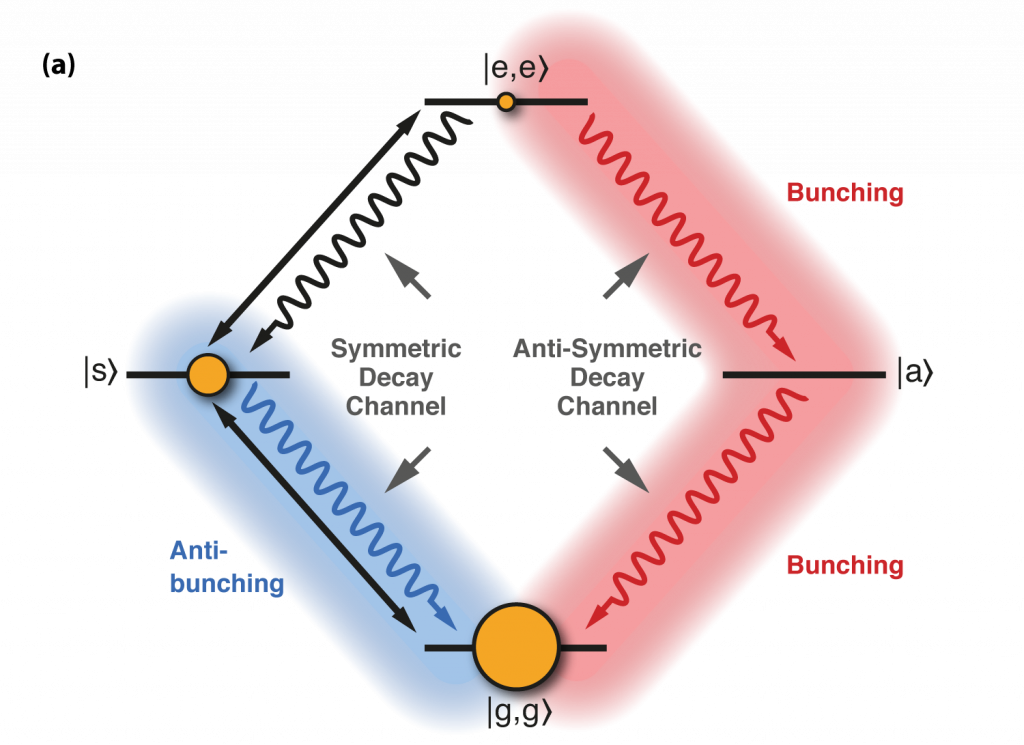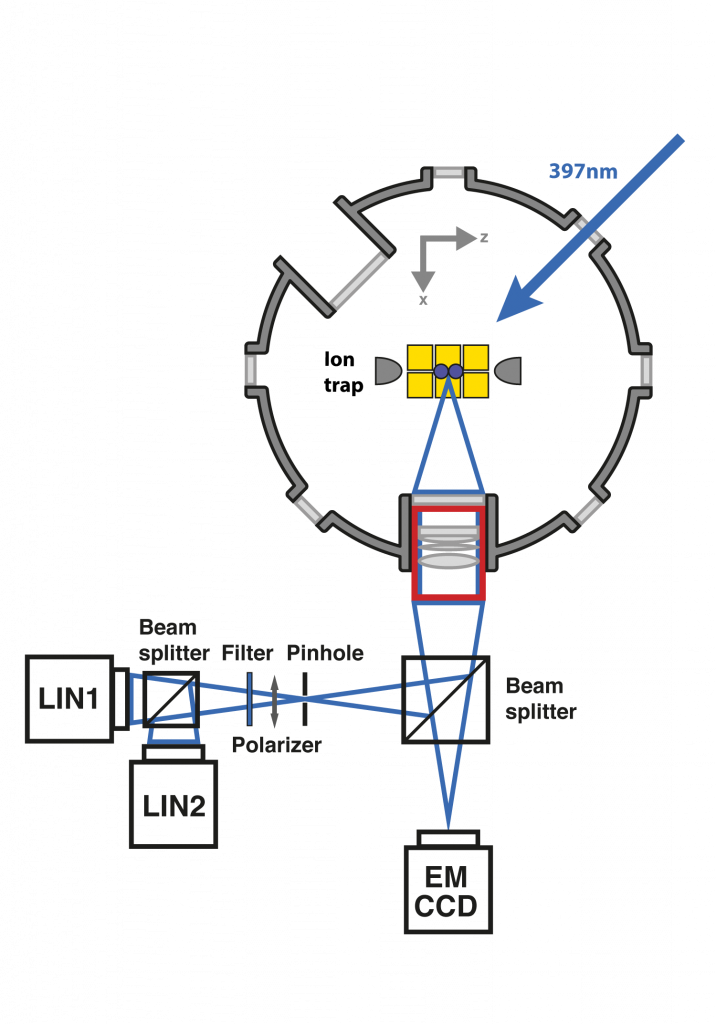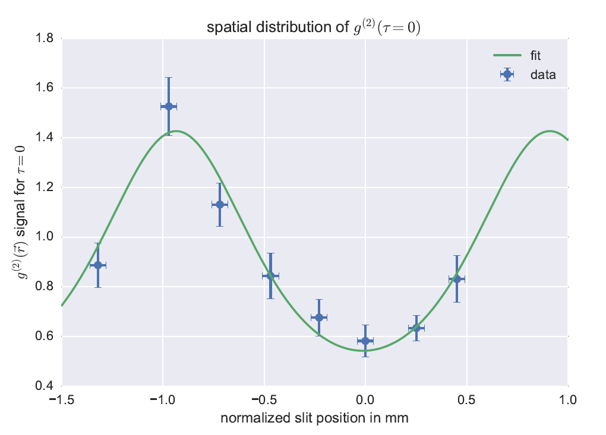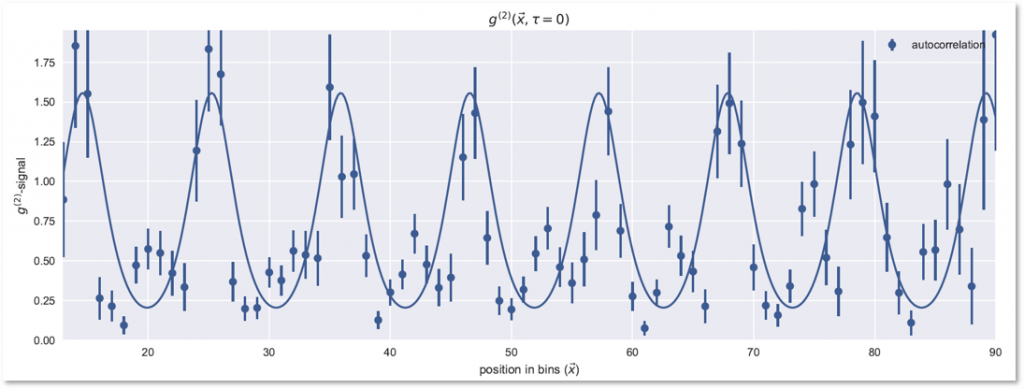Measurement induced entanglement of stored ions
Typically single photon emitters show an emission behaviour that is called anti-bunching. This means that the probability to detect a second photon after detection a first one is suppressed. By using two of this single photon emitters in form of trapped calcium ions, it is possible to create a ligh source consisting of two single calcium ions.
If the scattered light does not contain information of its creating ion (achieved by measuring the far-field), some interesting properties of this light source can be observed. As described in fig. 1, the two ion system can be described by the Dicke-Basis (10.1103/PhysRevLett.124.063603). Interestingly the anti symmetric state |a> does not couple to the laser field. The system now shows behaviour of typical single photon emitters, an anti-bunched photon statistics, if it driven in the symmetric decay channel. If a photon is emitted in a way that the system ends up in the anti-symmetric case, it becomes invisible for the driving laser and a second photon has to be emitted to bring the system back t0 the ground state. Such behaviour of the emission of two photons in a short period of time is called bunching and can be found normally only for chaotic or thermal light sources.
Interestingly the decay channel can be chosen by the angle of investigation of the trapped ion crystal, deliviring a light source whose emission statistics can be tuned from non-classical anti-bunching to classical bunching and everything in between by just changing the angle under which it is observed.


In fig. 2 the used setup is illustrated. Two calcium ions are stored in a segmented Paul trap and cooled to the Doppler-Limit. The emitted fluorescence light is collected by a lense that images the ion crystal on a amplified CCD camera. Only 10% of the light is used for this, the other 90% of the light are reflected by a 90/10 beam splitter to a Hanbury-Brown and Twiss (HBT) setup in which the detectors are replaced by two spatially resolving LINCam systems. The CCD camera is used to monitor the status of the ion crystal, so that the measurement can be paused upon ion loss and restarted once the crystals is ready again. The HBT setup is used to record all incomingdouble photon events with a coincidence window of +-40ns and a precision of 50ps at 1000*1000 spatial pixels.
From this event stream, the second order auto and cross-correlation function can be calculated on the fly. The resulting histogram is displayed live to monitor the success of the experiment.
In [1] the measurement was conducted by using avalanche photo diodes and a TDC (Time-To-Digital-Converter). The angle of observation was chosen by a slit. With this method the majority of the light is discarded and thus the measurement takes 2-3 days per point to gather sufficient statistics. In fig 3. the results of this measurement campaign can be seen. The acquisition of the 8 measured angles took roughly 30 days.
In [2] and fig.4 the LINCam was used to redo the experiment with the aim of measuring more than 8 angles. By using two synchronized LINCams it was possible to record a two-photon-event stream and correlating those events on the fly. The measurement campaign took 30 days again but delivered not only 8 observation angles, but 96. With the APD setup the campaing would have last one year.


Publications
[2] Stefan Richter, Sebastian Wolf, Joachim von Zanthier, and Ferdinand Schmidt-Kaler, Imaging Trapped Ion Structures via Fluorescence Cross-Correlation Detection, Phys. Rev. Lett. 126, 173602, https://doi.org/10.1103/PhysRevLett.126.173602
